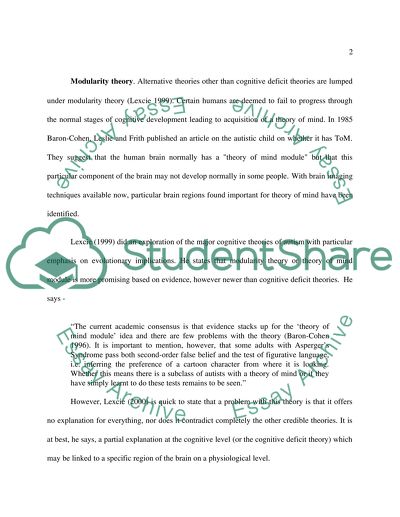Cite this document
(“Theory of mind Essay Example | Topics and Well Written Essays - 1000 words”, n.d.)
Retrieved from https://studentshare.org/health-sciences-medicine/1523831-theory-of-mind
Retrieved from https://studentshare.org/health-sciences-medicine/1523831-theory-of-mind
(Theory of Mind Essay Example | Topics and Well Written Essays - 1000 Words)
https://studentshare.org/health-sciences-medicine/1523831-theory-of-mind.
https://studentshare.org/health-sciences-medicine/1523831-theory-of-mind.
“Theory of Mind Essay Example | Topics and Well Written Essays - 1000 Words”, n.d. https://studentshare.org/health-sciences-medicine/1523831-theory-of-mind.


